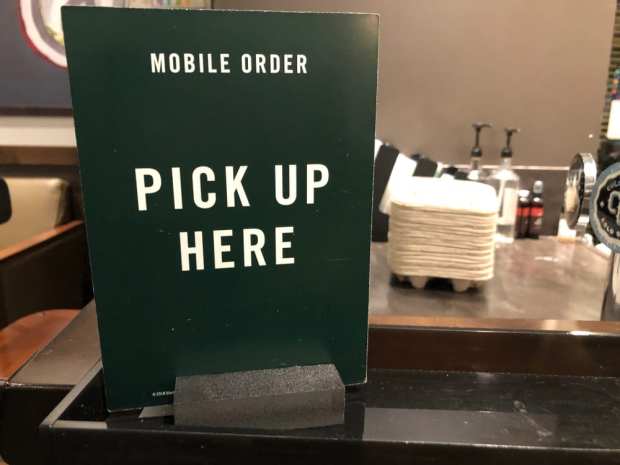What It Takes To Succeed In Mobile Order-Ahead Apps

Mobile food ordering has become a crowded space. What was once a niche activity has transformed into commonplace behavior. The space isn’t just filled with quick service restaurant (QSR)-branded apps, but also third parties like Uber Eats and DoorDash that have slashed delivery fees to stay competitive and launched subscription services to capture customers who order regularly.
The surge in these mobile order-ahead apps is being driven by consumers for the most part. Fewer than half — 44.5 percent — of QSR customers prefer to order in-person from a cashier.
Mobile ordering has also become big business. McDonald’s acquired artificial intelligence (AI) developer Dynamic Yield in March for more than $300 million to revamp its drive-through touchscreens and self-serve kiosks for better personalization.
According to the April 2019 Mobile Order-Ahead Tracker™, a collaboration between PYMNTS and Kount, the estimated value of the U.S. QSR industry is $199 billion.
QSRs in particular have embraced mobile ordering apps. This makes sense since fast food is all about speed and convenience. QSRs also often have loyalty and rewards programs which lend themselves to mobile devices and are a draw for users.
In recent months, Chipotle, Tim Hortons and Dunkin’ have all launched or revamped loyalty programs.
In the latest PYMNTS Mobile Order-Ahead Tracker™, we take a look at what differentiates the top players from, well, everyone else. We assessed 77 providers and scored them on their mobile app features as well as consumer adoption.
The top spot with a score of 96 out of 100 goes to Starbucks. The app is user-friendly and allows ordering food and beverages in advance, customization of orders and payment within the app. It also gives an estimated time for when an order will be ready to be picked up.
In 2018, 13 percent of all U.S. orders at the coffee chain came through the mobile app, and in a recent earnings call Starbucks President and CEO Kevin Johnson said in Q2 2019 it grew its active mobile app rewards membership 13 percent to 16.8 million. Those members also accounted for 41 percent of sales in U.S. stores over the quarter.
Domino’s ranked just behind at 94. The pizza chain’s app integrates a rewards program, has an order tracker and enables voice ordering on iPhones.
Chipotle Mexican Grill didn’t make it into the top 10, but the company has been using digital to its advantage. According to a recent earnings release, Chipotle grew digital sales by 100.7 percent in Q1 2019, and digital made up 15.7 percent of total sales. Chipotle locations with mobile ordering capabilities can see 30 percent of sales coming from digital. The Chipotle-Venmo rewards partnership also appears to be paying off. According to Chipotle, 3 million members have already signed up for the loyalty program launched in March.
White Castle had one of the lower ranking apps with a score of 31. The burger chain’s app lacks the loyalty component that the high-scorers have, and in 2018, the QSR partnered with GrubHub for delivery in markets where both operate.
Despite the success of Starbucks’ standalone app, the third-party partnership route has been adopted by many QSRs to offer delivery, a service not typically associated with QSRs. McDonald’s partnered with Uber Eats, while Taco Bell and Wendy’s have teamed up with DoorDash.
Grubhub has struggled in the delivery services battle. Last month, the food delivery firm reported shares falling due to competition with Uber Eats, even though its Q1 2019 revenue was up year over year.
Amid all the fervor for mobile-ordering apps, the Mobile Order-Ahead Tracker™, raised a potential barrier: fraud. Though fraud in general increased 13 percent over the past year, fraud in the food and beverage industry increased by a whopping 60 percent.
Why?
One theory is that restaurants are new to digital technology and might not be as experienced with online security best practices as other industries. QSRs are also vulnerable to account takeovers (ATOs) where fraudsters not only steal payment information but also deplete an account of accrued points or rewards.
Consumers shouldn’t have to trade convenience for security, so it’s going to be necessary to build consumer trust along with offering new, exciting features in these mobile order-ahead apps if QSRs and third-parties want to see an uptake in adoption.
